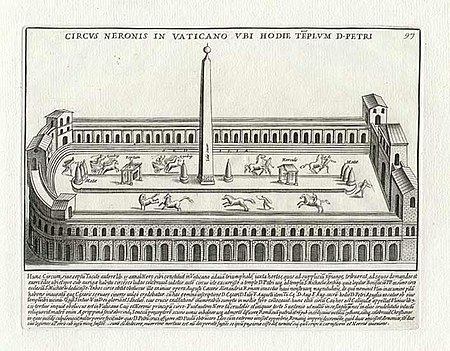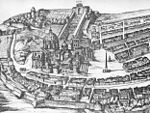Circus of Nero
15th-century disestablishments in Italy1st-century establishments in ItalyAncient Roman circuses in RomeBuildings and structures completed in the 1st centuryBuildings and structures demolished in the 15th century ... and 3 more
CaligulaFormer buildings and structures in ItalyNero

The Circus of Nero or Circus of Caligula was a circus in ancient Rome, located mostly in the present-day Vatican City. It was first built under Caligula who was a chariot-racing enthusiast in the Horti Agrippinae villa-estate belonging to Agrippina the Elder, outside the city walls on the left bank of the Tiber.
Excerpt from the Wikipedia article Circus of Nero (License: CC BY-SA 3.0, Authors, Images).Circus of Nero
Basilica Forecourt,
Geographical coordinates (GPS) Address Nearby Places Show on map
Geographical coordinates (GPS)
| Latitude | Longitude |
|---|---|
| N 41.901666666667 ° | E 12.455277777778 ° |
Address
Basilica Forecourt
00120 , Vatican City
Vatican City
Open on Google Maps








